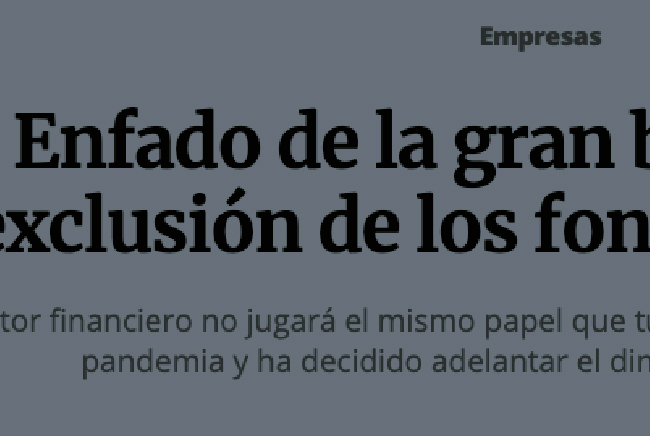

The contentious handling of Next Generation funds
The European Union’s Next Generation funds should provide 140 billion euros in aid and loans to the Spanish economy. While the Spanish government boasts of exemplary management, autonomous communities and business organisations criticise bottlenecks that slow down their arrival in the real economy.
The Spanish government’s 2022-2025 Stability Programme foresees that, together with the impact of the war and the recovery of tourist activity, “the third factor that will determine growth in 2022 will be the Recovery Plan, whose first effects were already felt in 2021 and which will reach its cruising speed this year”. However, this third factor seems to be moving forward with the handbrake on.
The PERTEs (Strategic Plans for Economic Recovery and Transformation) were created with the aim of organising the distribution of a large part of the 140 billion euros in aid and loans that the EU has granted Spain to alleviate the economic ravages of the pandemic. So far, eleven PERTEs have been approved, three of which have open calls for applications and one, for electric vehicles, is already closed.
According to the Spanish government’s Recovery, Transformation and Resilience Plan, the largest allocations are expected to go to the modernisation and digitisation of industry and services (23%), the urban and rural agenda (21%) and infrastructure (15%). And to a lesser extent, to education (10 %), energy transition (9%), employment policies and the care economy (7%), modernisation of public administration (6 %) and the National Health System (6%), with residual percentages for culture and sport.
Contrasting visions
The Spanish government boasts of being the one that has mobilised the most Next Generation funds from the European Union, and the one that has done so most quickly. And the truth is that the President of the European Commission, Ursula von der Leyen, recently stated that Spain had been the first country to apply for the second payment of European recovery funds.
However, business organisations have a very different view: they estimate that only 13% of the nearly 33 billion of the eleven approved EERP funds have been mobilised and that barely 2% of the total has reached the real economy.
It is estimated that 8 of the 19 billion for 2021 have yet to be mobilised, to which at least another 26 billion should be added this year. But there is also the problem that part of the money mobilised was destined for public bodies such as ADIF or is still stuck between the central government and the autonomous communities, which aspire to allocate of half of the aid.
Various business organisations have criticised the Spanish government for the lack of agility, the lack of time for the presentation of applications in some solicitations, the bureaucratic complexity and, in short, the low percentage of Next Generation funds that have reached companies.
Both the president of the CEOE, Antonio Garamendi, and the president of the Galician Confederation of Entrepreneurs, Juan Manuel Vieites, have agreed in recent months that only one in four euros has reached companies.
For their part, organisations such as the Independent Authority for Fiscal Responsibility (Airef) have also criticised the government for the delays in implementation and the lack of official information.
The multiplier effect of European aid
In the calls for proposals planned by the central government and the autonomous communities for the second half of this year, suburban railways, digitalisation, health and the agri-food industry should be the areas with the highest concentration of funds.
The pull effect of public aid is evident, as highlighted in a recent report by the Bank of Spain, which calculates that “a 1% increase in public investment would be associated with an increase of the same magnitude in private investment in the short term”.
Hence, the importance of speeding up the execution of European funds. Also, there is concern about another piece of data from a survey by the Bank of Spain: the proportion of companies interested in applying to calls for proposals related to projects financed with European funds fell to 16.6% in the first quarter of 2022, some 7 percentage points lower than in the previous quarter.
The Bank of Spain expects the Next Generation funds to contribute 1.4% to Spanish GDP in 2022, but this percentage could be reduced if the aid does not arrive to the extent and at the speed expected.
11Onze is the community fintech of Catalonia. Open an account by downloading the super app El Canut for Android or iOS and join the revolution!
Leave a Reply
You must be logged in to post a comment.





gràcies
Gràcies a tu, Joan!!!
Bona informació. Merci
Moltes gràcies, Jordi!!!
Aquestes ajudes, a les petites i mitjanes empreses els suposa una burocràcia que els fa desdir de demanar-les. A més a més tenen objectius concrets que potser per elles no són prioritaris.
Mercè, és veritat que s’ha de llegir molt bé la lletra petita i disposar de tota la documentació necessària per accedir a les ajudes.
Marca Ñ
Ja és així, ja… Moltes gràcies pel teu comentari, Manel!!!